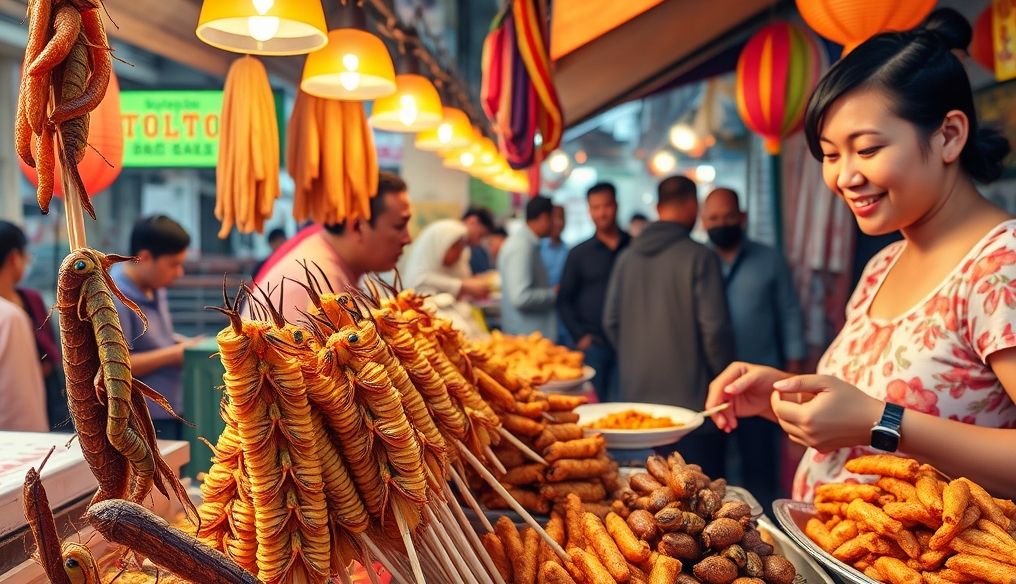What Are the Strangest Foods You Should Try in Asia?
Asia, a vast and diverse continent, offers a unique food experience. While some Asian dishes are famous worldwide, there are many bizarre foods that might shock or intrigue you. If you're an adventurous eater and eager to try something completely new, here's a list of the strangest foods you should try in Asia.
1. Bird's Nest Soup - China
Bird's Nest Soup is considered a delicacy in Chinese cuisine. The nest is made from the solidified saliva of swiftlets, which build their nests on the high cave walls. The nest is cleaned and then cooked in chicken broth, resulting in a soup with a gelatinous texture and a mild flavor. It is believed that this soup promotes health and improves skin.
Why is it strange?
The basic idea of eating a bird's nest made of saliva may be strange to many cultures.
2. Balut - Philippines
Balut is a fertilized duck egg that is boiled and eaten in the shell. The embryo inside the egg is usually between 16 and 21 days old. Balut is a popular street food snack in the Philippines and Vietnam, often eaten with salt or vinegar.
Why is it strange?
The idea of eating a partially developed duck embryo may be off-putting to some. The texture and small bones may be unfamiliar.
3. Fried Insects - Thailand
Fried insects are a common snack in Thailand, sold on streets and markets. Common insects include grasshoppers, crickets, and worms. The insects are fried until crispy and then seasoned with spices and salt.
Why is it strange?
In many Western cultures, insects are considered pests, not food. The idea of eating whole insects may be unappetizing.
4. Natto - Japan
Natto is fermented soybeans characterized by its pungent smell and sticky texture. It is often eaten with rice, soy sauce, and mustard. Natto is considered a healthy breakfast food in Japan, believed to improve digestion and strengthen bones.
Why is it strange?
The strong smell and sticky texture are the biggest barriers to accepting Natto. The taste is acquired and may take some time to get used to.
5. Sannakji - South Korea
Sannakji is raw baby octopus that is chopped up and served immediately. It is often seasoned with sesame oil. The octopus is still moving on the plate, and it must be chewed thoroughly to avoid sticking to the throat.
Why is it strange?
The idea of eating octopus while it is still moving may be terrifying to some. There is a risk of choking if it is not chewed properly.
6. Beondegi - South Korea
Beondegi are steamed or boiled silkworm pupae that are seasoned. They are often sold as a street food snack in South Korea. They have an earthy taste and a chewy texture.
Why is it strange?
Eating insect pupae may be unappealing to many people. The appearance and texture may be unfamiliar.
7. Kusaya - Japan
Kusaya is a type of dried, fermented fish known for its extremely pungent odor. The fish is soaked in a special brine and then dried. The smell is so strong that it can permeate an entire neighborhood.
Why is it strange?
The extremely foul odor is the main reason for the strangeness of this food. The taste is strong and acquired.
8. Durian - Southeast Asia
Durian is a tropical fruit known for its strong, pungent odor. Some people love it, and others hate it intensely. The taste is sweet and creamy, with hints of onion and garlic.
Why is it strange?
The strong odor is the main reason for the strangeness of Durian. It has been banned in some hotels and public transportation due to its smell.
9. Casu Marzu - Sardinia (Although not Asian, worth mentioning)
Casu Marzu is a Sardinian sheep milk cheese that contains live insect larvae (maggots). The larvae are deliberately introduced to the cheese to promote fermentation and soften the cheese. The cheese is often eaten with the live maggots, but they can also be removed.
Why is it strange?
The idea of eating cheese with live maggots may be extremely disgusting. There is a risk of food poisoning if the maggots die.
10. Bottled Sewage Water - Japan (Historical precedent)
In 2013, a Japanese company launched a controversial product: bottled sewage water. The product was marketed as an alternative water source in emergencies, but it sparked widespread outrage due to its disgusting nature.
Why is it strange?
Drinking sewage water, even after it has been treated, is disgusting and unacceptable to most people.
Tips for Trying Strange Foods in Asia
- Start small: Don't try to eat large amounts of strange food at first. Start with a small piece to see how you react to it.
- Be open-minded: Try to be open to trying new things. Remember that what is considered strange in one culture may be normal in another.
- Find reliable sources: Make sure that the food you are eating has been prepared properly and is from a reliable source to avoid food poisoning.
- Ask the locals: Ask locals for recommendations on strange foods to try. They can also provide information on how to prepare and eat the food properly.
- Enjoy: Trying strange foods can be a fun and exciting adventure. Enjoy the journey and open your mind to new cultures.
Remember that tastes vary from person to person. What one person may find disgusting, another may find delicious. Enjoy experimenting with strange foods in Asia and be prepared to expand your culinary horizons!




